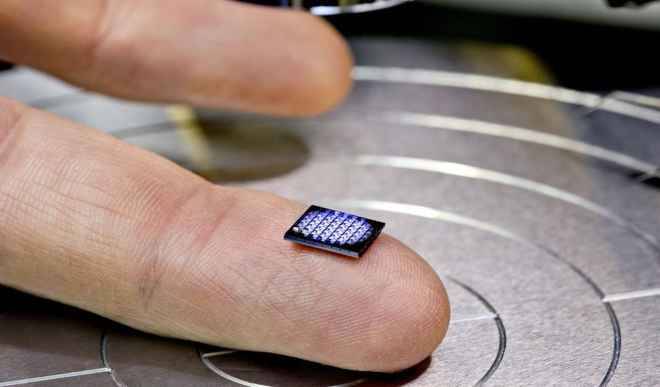The world’s smallest computer revealed
The University of Michigan has bested IBM in tiny computing by producing the world’s smallest computer that is just 0.3mm long. Researchers created a ‘microdevice’ that is completely dwarfed by a grain of rice. However, both IBM and the university are not sure if their devices actually qualify as a computer, because they lose all […]


The University of Michigan has bested IBM in tiny computing by producing the world’s smallest computer that is just 0.3mm long.
Researchers created a ‘microdevice’ that is completely dwarfed by a grain of rice.
However, both IBM and the university are not sure if their devices actually qualify as a computer, because they lose all programming and dating once power is turned off.
The University of Michigan created a computer that is just 0.3 mm long. The ‘microdevice’ is completely dwarfed by a grain of rice
‘We are not sure if they should be called computers or not. It’s more of a matter of opinion whether they have the minimum functionality required,’ said David Blaauw, a professor of electrical and computer engineering, who led the development of the new system.
IBM revealed their 1mm x 1mm computer at its Think 2018 conference in March.
Prior to that, the smallest computer was the 2x2x4mm Michigan Micro Mote, which could retain its programming and data even when the power is cut off.
The new device from the university is one-tenth the size of IBM’s computer and is too small to have conventional radio antennae.
Instead, it receives and transmits data with visible light. A base station provides light for power and programming, and it receives the data.
‘We basically had to invent new ways of approaching circuit design that would be equally low power but could also tolerate light,’ Blaauw said.
The light from the base station, and from the device’s own transmission LED, can induce currents in its tiny circuits.
Prior to the new computer, the smallest computer was the 2x2x4mm Michigan Micro Mote (pictured) which could retain its programming and data even when the power is cut off
The device was designed using a precision sensor that converts temperatures into time intervals, defined with electronic pulses.
The computer can sense temperatures in the smallest of areas, such as a cluster of cells, and report it within 0.1 degrees Celsius accuracy.
The researchers hope the device can be used to advance efforts in oncology and in evaluating cancer treatments, because tumors may run hotter than normal temperatures.
